the emergent patterns of paint wrinkling
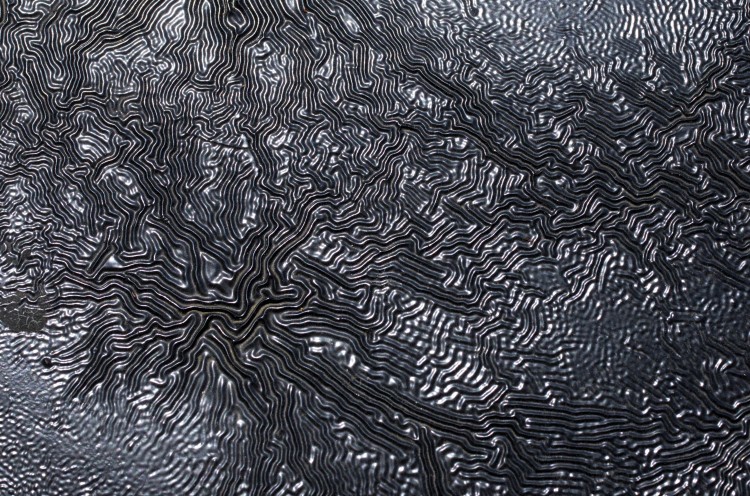 Last weekend we ventured to the Arnold Arboretum to view the blooming lilacs. Although the flowers were spectacular, it was actually a garbage can that ended up garnering our attention. In an episode that no doubt puzzled and disturbed passersby, we spent about 20 minutes staring at the lid of a black, metal garbage in the Cherry blossom area. From a distance, the barrel-shaped trash can appeared rather nondescript but upon closer examination its painted surface was textured by an incredible landscape of wrinkling patterns.
Last weekend we ventured to the Arnold Arboretum to view the blooming lilacs. Although the flowers were spectacular, it was actually a garbage can that ended up garnering our attention. In an episode that no doubt puzzled and disturbed passersby, we spent about 20 minutes staring at the lid of a black, metal garbage in the Cherry blossom area. From a distance, the barrel-shaped trash can appeared rather nondescript but upon closer examination its painted surface was textured by an incredible landscape of wrinkling patterns.
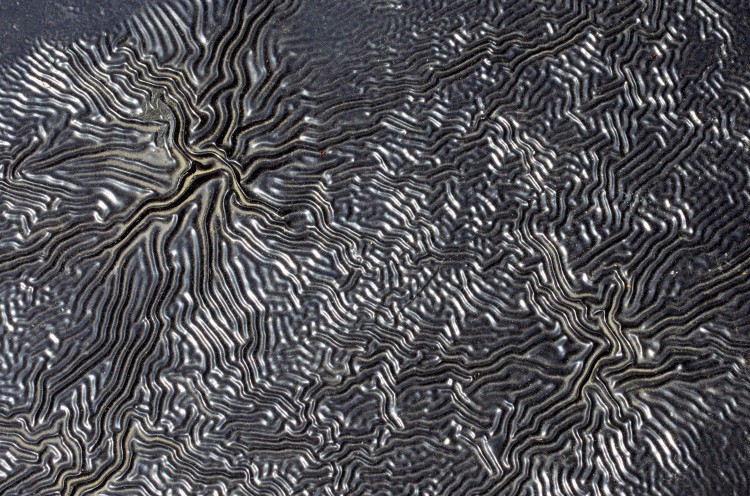 Ridges radiating from certain zones, shifting in scale as they moved away from the epicenter. The patterns evoke images of sand dunes, brain coral and Turing patterns. Perhaps, these patterns are due to buckling in the paint as the metal lid expands and contracts with the seasons. The variation in scale could be caused by uneven paint application. Thicker areas of paint giving larger wrinkles and thinner zones the smaller ones.
Ridges radiating from certain zones, shifting in scale as they moved away from the epicenter. The patterns evoke images of sand dunes, brain coral and Turing patterns. Perhaps, these patterns are due to buckling in the paint as the metal lid expands and contracts with the seasons. The variation in scale could be caused by uneven paint application. Thicker areas of paint giving larger wrinkles and thinner zones the smaller ones.
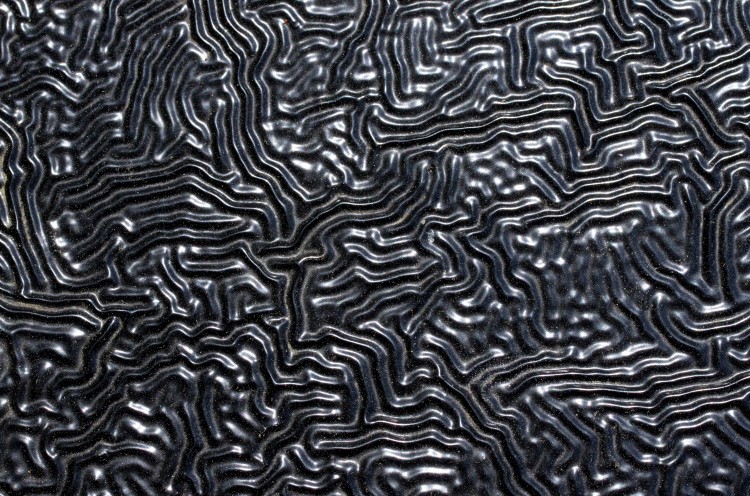 From my attempts to search the internet for more information, I’ve discovered that most people view paint wrinkling as an unpleasant consequence of improper paint application. However, some vintage car enthusiasts have actually developed a paint to yield this specific effect called “wrinkle paint” in order to match finishes found on old engine valve covers. And material scientists are looking at ways to design such surfaces by producing elastomer sheets with variable elasticity for microfabrication of structures.
From my attempts to search the internet for more information, I’ve discovered that most people view paint wrinkling as an unpleasant consequence of improper paint application. However, some vintage car enthusiasts have actually developed a paint to yield this specific effect called “wrinkle paint” in order to match finishes found on old engine valve covers. And material scientists are looking at ways to design such surfaces by producing elastomer sheets with variable elasticity for microfabrication of structures.
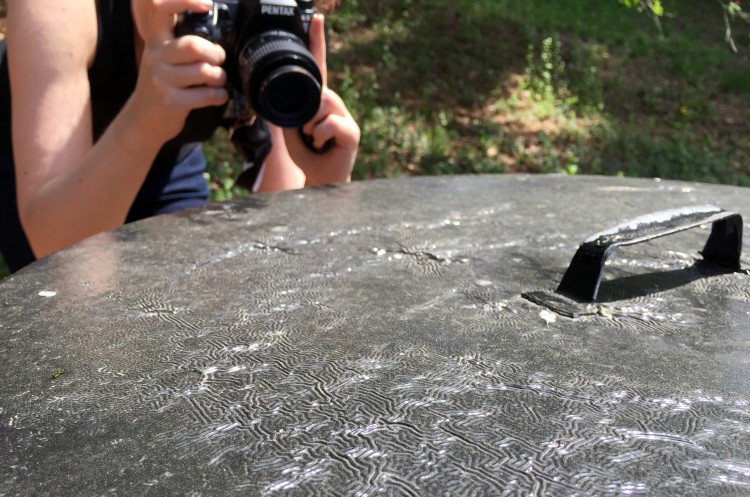
You can view more macro photographs of paint wrinkling in our wrinkle patterns set on Flickr.

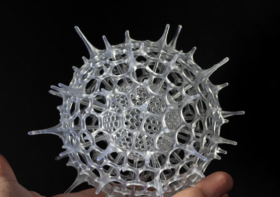
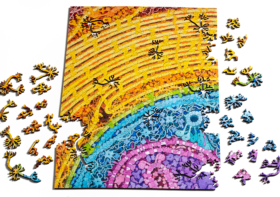

Jennifer Moore
Very Cool.
nociam
the effect is produced by the drying (and contraction) of the surface layer – probably because the lid was exposed to the sun so shrank(?) before the lower layers could dry. Or maybe it melted in the sun and again the top layer set first and the lower layers stayed fluid for longer.
I was trying to spray paint some wood last week (I was after a mirror finish) but I got impatient with applying successive fine layers, so applied it fairly thick to speed things up, but of course this was foolish as the lower layer could not dry (or maybe would have if I had given it a couple of days), as it wasn’t exposed to air. I got a thick skin – something a bit like your lid.
Victoria Chapman
Paint chemist here – yes, the wrinkle height is very much determined by the film build. The freer the solidified top layer is to move over the still liquid under layer, the bigger the wrinkles will get.
Except where there is a nucleation site, which is where, the wrinkles form first, and the surface is drawn up to that spot – which you can see around the handle.
It’s an interesting topic, and thankyou for noticing the fascinating in the most otherwise mundane of things!